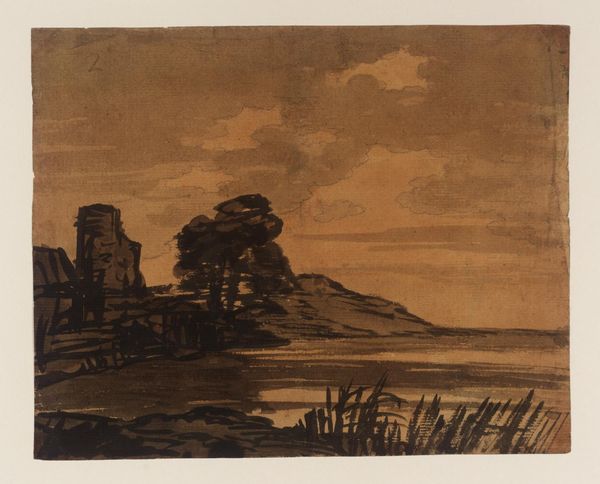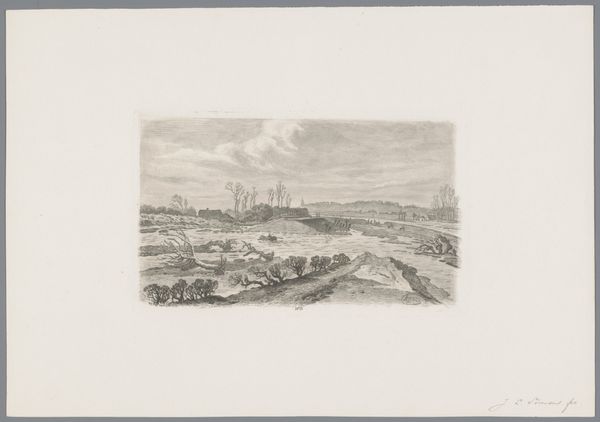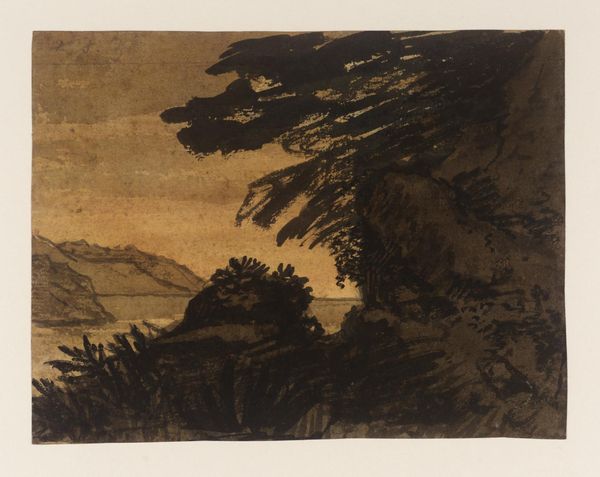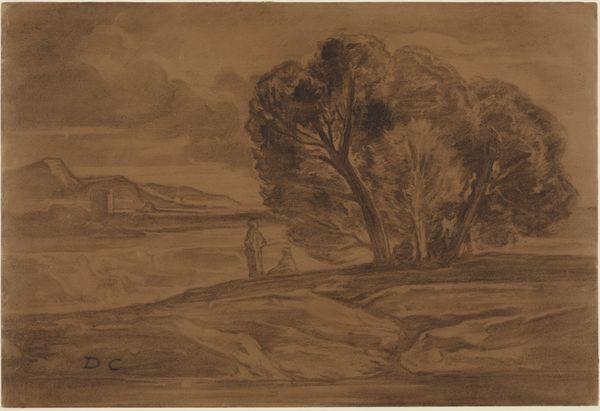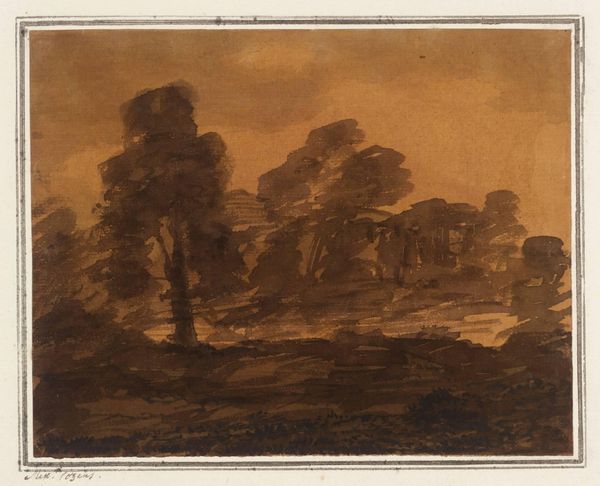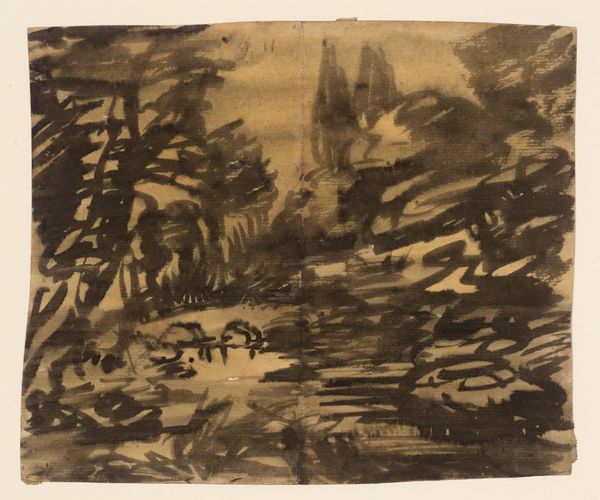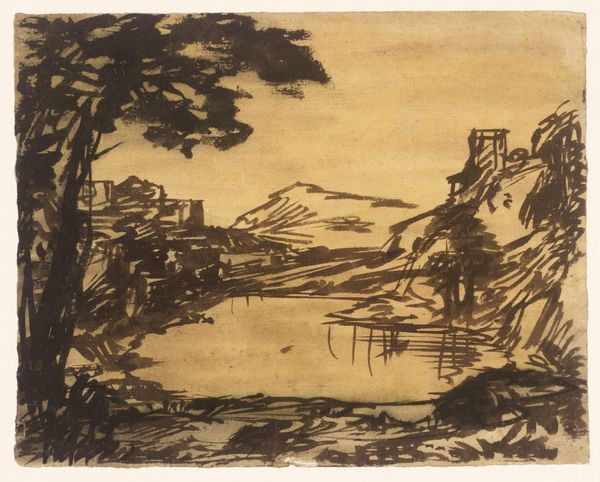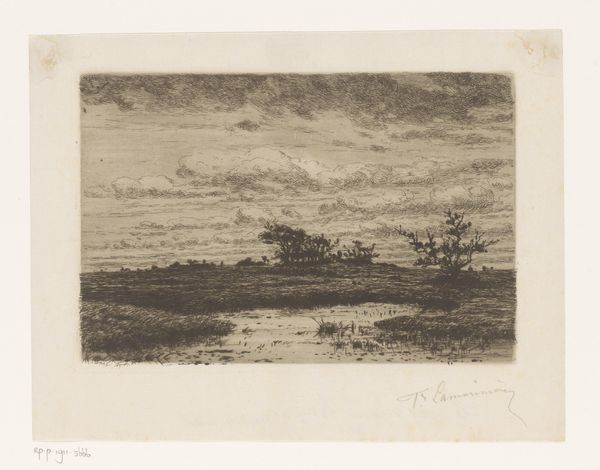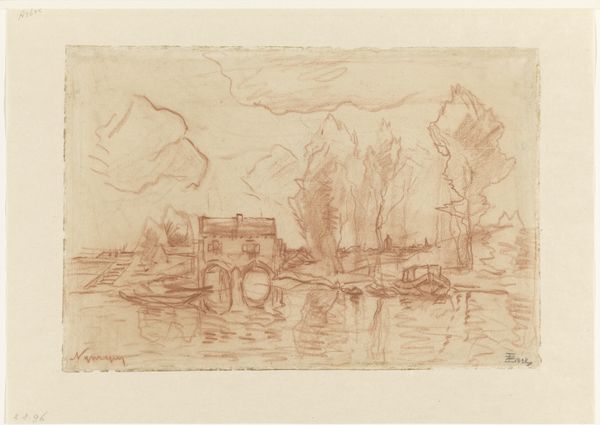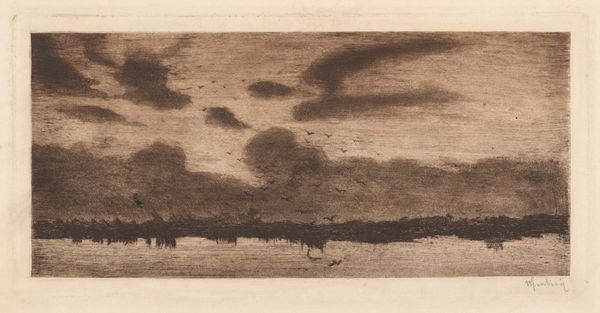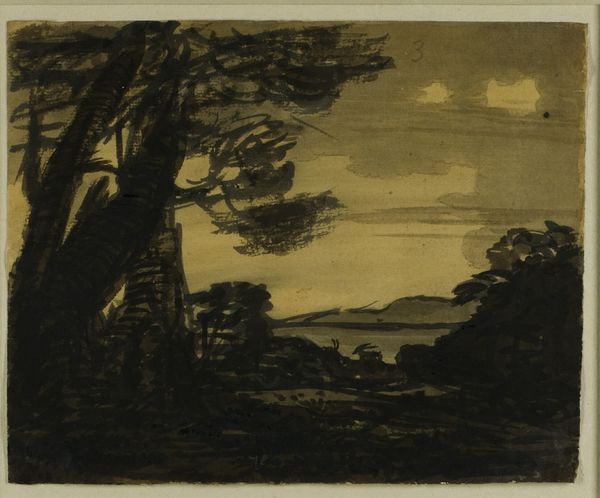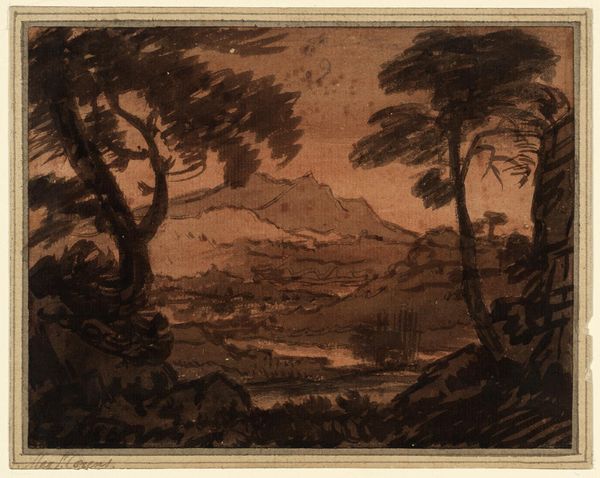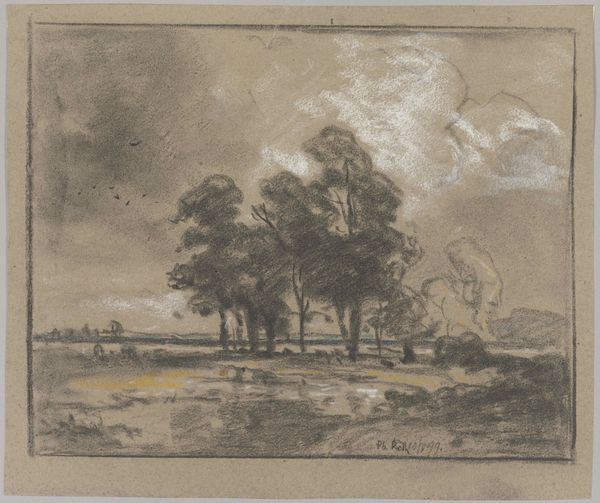
Dimensions: support: 162 x 207 mm
Copyright: CC-BY-NC-ND 4.0 DEED, Photo: Tate
Editor: This is Alexander Cozens' "A Blot: Landscape Composition" from the Tate Collection. The ink wash feels so immediate, almost accidental. What strikes you about the materiality of this piece? Curator: The "blot" technique itself becomes a comment on artistic production. Cozens isn't just depicting a landscape, but revealing the very process of its creation, foregrounding labor and chance. How does this challenge traditional notions of artistic skill and intention? Editor: So, by embracing chance, he's questioning the idea of the artist as a master craftsman? Curator: Precisely. It reframes artistic value, moving away from idealized representation towards an emphasis on the means and materials of art making. It democratizes the process, almost inviting participation. Editor: That's a fascinating perspective. I hadn't considered the social implications of his technique before. Curator: Considering the social context of artistic production and the means behind it really changes how we appreciate this piece.
Comments
tate 6 months ago
⋮
http://www.tate.org.uk/art/artworks/cozens-a-blot-landscape-composition-t08114
Join the conversation
Join millions of artists and users on Artera today and experience the ultimate creative platform.
tate 6 months ago
⋮
Cozens's famous 'blot' technique was fully evolved by the 1750s. However he did not explain it in detail until the publication of 'A New Method of Assisting the Invention in Drawing Original Compositions of Landscape'(1786). The idea seems to have originally been developed by him as a teaching aid, to liberate the imagination of the student who, he felt, spent too much time in copying the works of others. He wrote that the blot was a 'production of chance, with a small degree of design'. The true blot was 'an assemblage of accidental shapes', 'forms without lines from which ideas are presented to the mind'. Blotting was done deliberately, the 'rude forms' which result having been made 'at will'. Gallery label, September 2004
